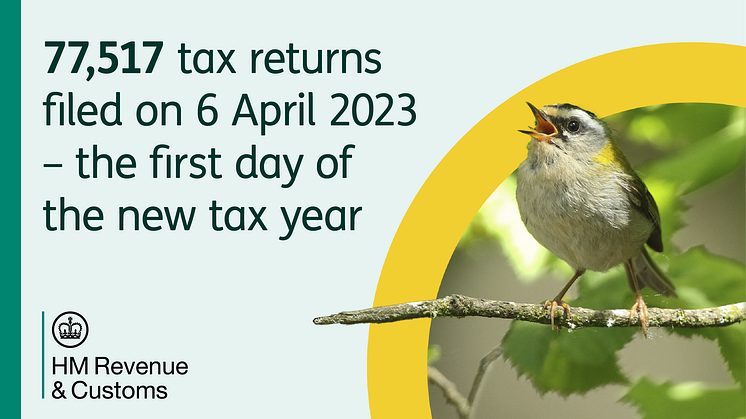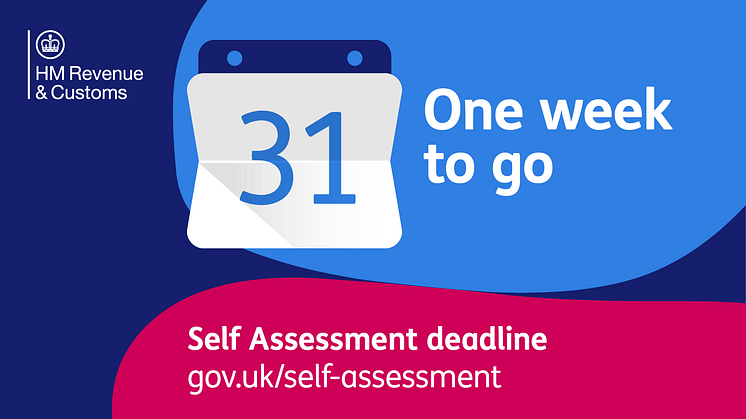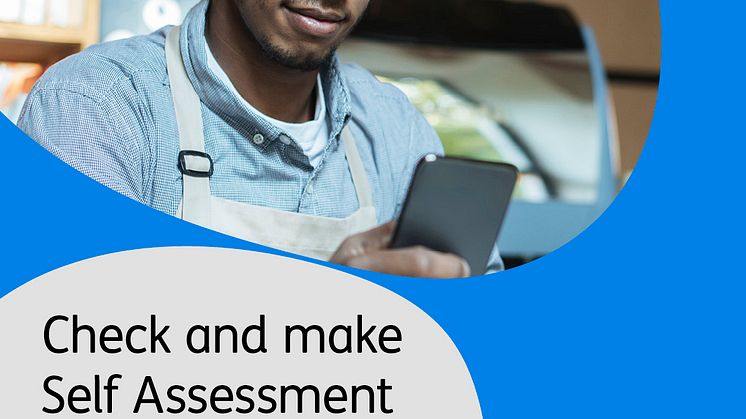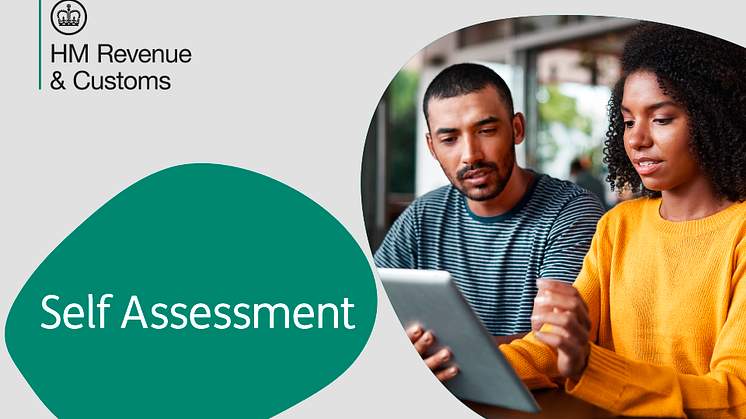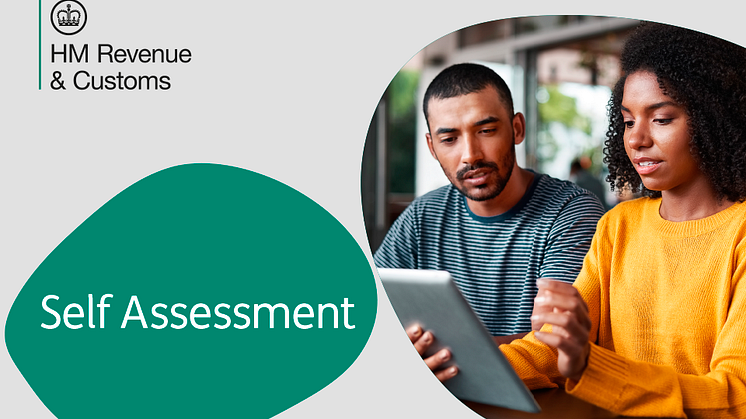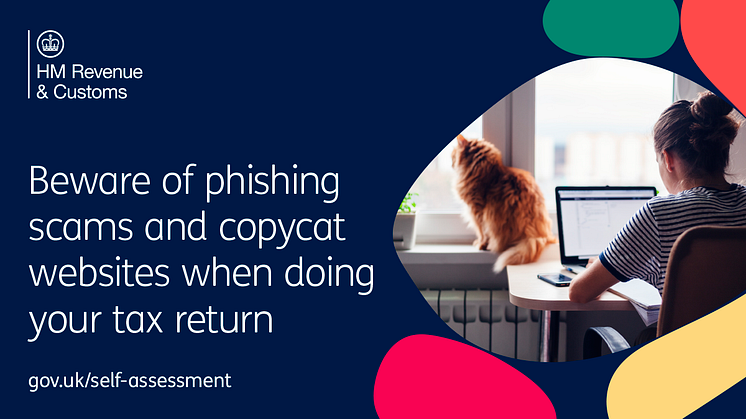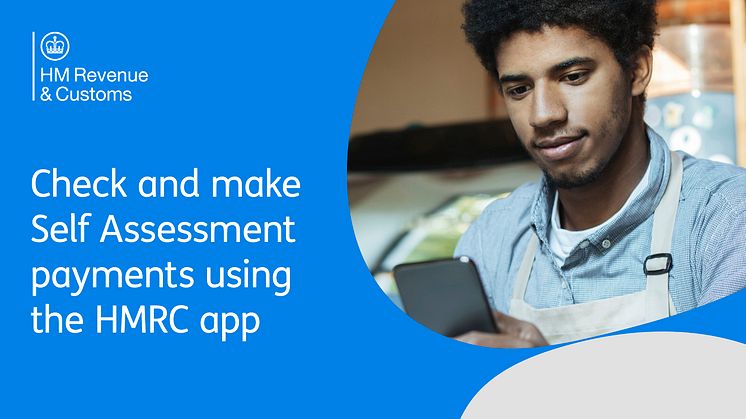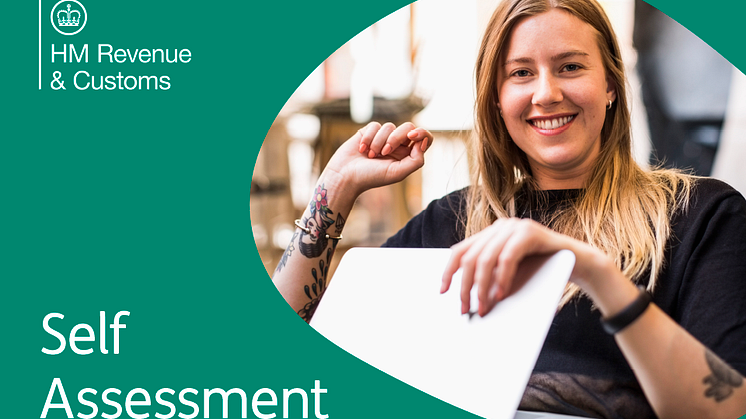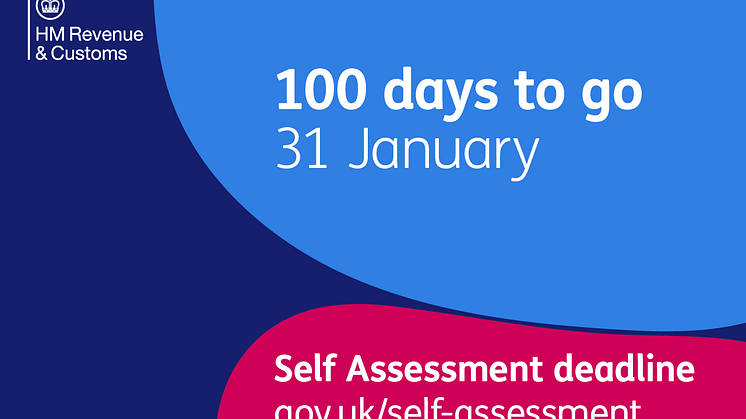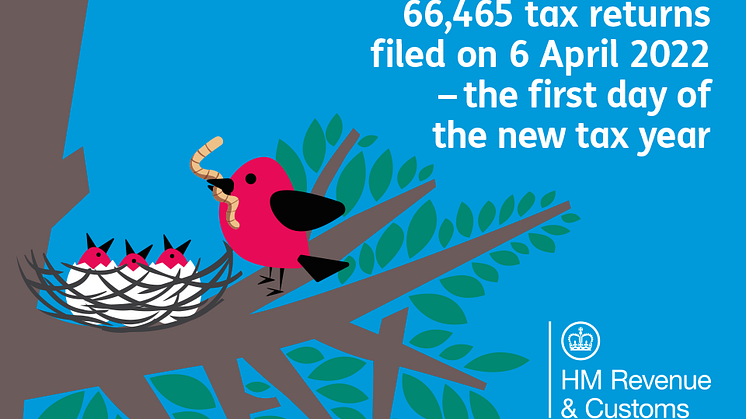
Press release -
Almost 5.7 million customers still to file their tax return
There is less than one month for around 5.7 million Self Assessment customers to file their tax return or they may face a penalty, HM Revenue and Customs (HMRC) said.
More than 12 million customers are expected to file a tax return for the 2021 to 2022 tax year by 31 January 2023. HMRC has revealed that 129 customers submitted theirs on 1 January between 00:00 and 00:59, joining those customers who have already met their obligations.
More than 42,500 customers chose to see in the new year by submitting their return on 31 December and 1 January:
- New Year’s Eve: 25,043 tax returns were filed. The peak time for filing was between 14:00 and 14:59, when 2,713 returns were received.
- New Year’s Day: 17,571 tax returns were filed. The peak time for filing was between 15:00 and 15:59, when 1,697 returns were received.
Myrtle Lloyd, HMRC’s Director General for Customer Services, said:
“There is less than one month for customers to submit their tax returns and my message to those yet to start is: don’t delay, do it online. HMRC provides lots of useful information to help you get started. Visit GOV.UK and search ‘Self Assessment’.”
Self Assessment customers can submit their tax returns and pay any tax owed online at GOV.UK.
HMRC is warning customers that the deadline to submit a paper return has passed and tax returns can only be submitted online. Anyone who files after 31 January may face a penalty.
HMRC will treat those with genuine excuses leniently, as it focuses on those who persistently fail to complete their tax returns and deliberate tax evaders. Customers who provide HMRC with a reasonable excuse before the 31 January deadline can avoid a penalty after this date. The penalties for late tax returns are:
- an initial £100 fixed penalty, which applies even if there is no tax to pay, or if the tax due is paid on time
- after 3 months, additional daily penalties of £10 per day, up to a maximum of £900
- after 6 months, a further penalty of 5% of the tax due or £300, whichever is greater
- after 12 months, another 5% or £300 charge, whichever is greater
There are also additional penalties for paying late of 5% of the tax unpaid at 30 days, 6 months and 12 months.
Customers need to pay any tax owed by the 31 January deadline. Information about the different ways to pay, including via the HMRC app, can be found on GOV.UK.
Those who are unable to pay their tax bill in full can access support and advice on GOV.UK. HMRC may be able to help by arranging an affordable payment plan, known as Time to Pay. Customers should try to do this online; go to GOV.UK for more information. Alternatively, they can contact the helpline.
HMRC has a wide range of resources to help customers complete their tax return, including guidance, webinars and YouTube videos.
Customers need to be aware of the risk of falling victim to scams. Check HMRC scams advice on GOV.UK.
Notes to Editors
1. Find out more about Self Assessment.
2. The deadline is 31 January 2023.
3. HMRC wants to help you get your tax right. Lots of information and support is available which includes:
- HMRC’s digital assistant - the assistant will help you find information, and if you can’t what you’re looking for you can ask to speak to an adviser.
- Guidance notes and help sheets and YouTube videos provide a wealth of information if you’re stuck or confused.
- Live webinars where you can ask questions or if you can’t join, you can watch recorded webinars on demand.
- HMRC app and Personal Tax Account - you can instantly find your Unique Taxpayer Reference, make a Self Assessment payment, get your National Insurance number and get your employment income and history for your tax return.
- Technical support for HMRC online services for help signing into online services
- Email updates - subscribe to HMRC email updates so you don’t miss out on the latest information on Self Assessment.
- Social media updates - follow HMRC Twitter @HMRCcustomers to get the latest updates on Self Assessment services and useful reminders. If you need extra support to help your with Self Assessment you can contact a voluntary or community sector organisationwho can provide you with help and advice, or you can get support directly from HMRC.
4. If you think you are no longer required to complete an Self Assessment return, you can check if you need to send a Self Assessment tax return.
5. Customers should include their bank account details when filing, so that if HMRC needs to make a repayment, they can do so quickly and securely.
6. Customers who don’t have a Government Gateway user ID and password will need two forms of evidence to prove their identity. This can include their UK passport and UK driving licence. We are rolling out a new identity checking alternative, which lets them use the camera on their phone to confirm a match with their driving licence.
7. We’re urging customers never to share their Government Gateway user ID and password. Someone using these details could steal from them or make a fraudulent claim in their name.
8. Follow HMRC’s Press Office on Twitter @HMRCpressoffice
Related links
- Pay your Self Assessment tax bill
- If you cannot pay your tax bill on time
- HMRC phishing and scams: detailed information
- Self Assessment tax returns
- Self Assessment: chat
- Self Assessment tax return forms
- YouTube videos - Self Assessment
- HMRC email updates, videos and webinars for Self Assessment
- The free HMRC app
- Personal tax account: sign in or set up
- Technical support with HMRC online services
- Help and support email service
Topics
Categories
Issued by HM Revenue & Customs Press Office
HM Revenue & Customs (HMRC) is the UK’s tax authority.
HMRC is responsible for making sure that the money is available to fund the UK’s public services and for helping families and individuals with targeted financial support.



